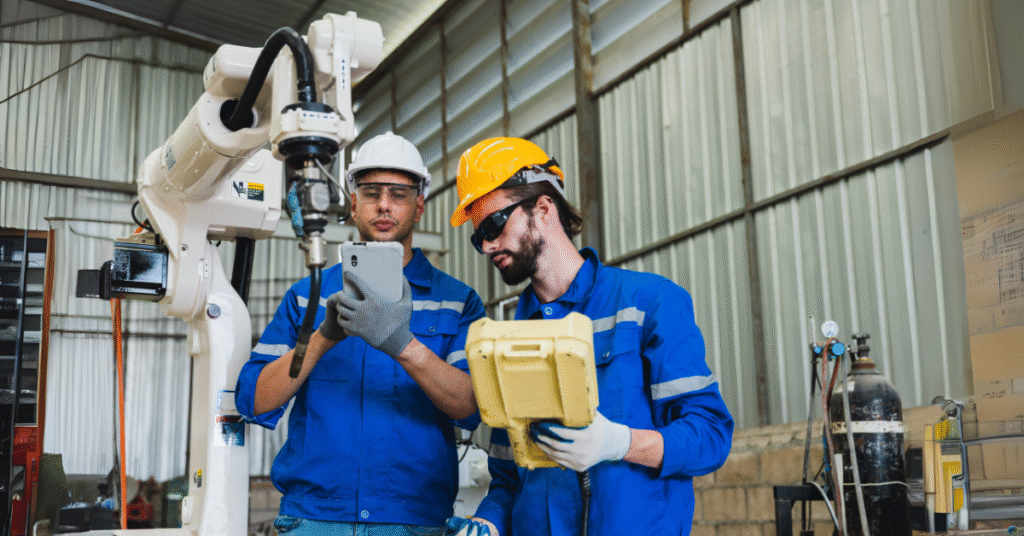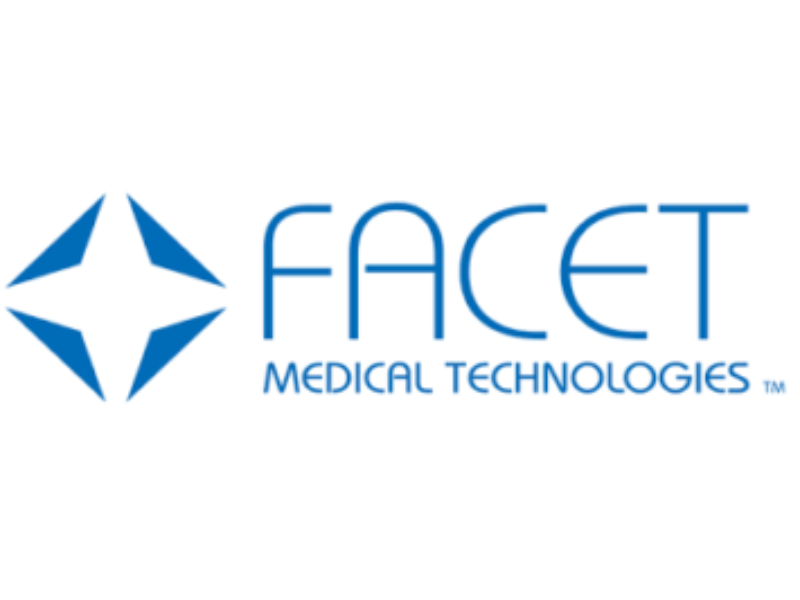Predictive Quality Control? How Toyota achieves 35% lower defects by detecting them before they happen!
- What Makes Toyota's Predictive System Different
- Why Edge Computing is Critical for Real-Time Quality Control
- Preserving Human Expertise While Enhancing Capabilities
- Quantifiable Improvements Across Operations
- Actionable Roadmap for Manufacturers
- Key Takeaways: The Future of Manufacturing Quality
- Join the Predictive Quality Control Revolution
- Frequently Asked Questions

Have you ever wondered what it would cost your company if you could eliminate 35% of manufacturing defects before they even occur? In today’s hyper-competitive manufacturing landscape, the difference between reactive “catch-and-fix” quality control and predictive “prevent-before-it-happens” systems can make or break a company’s bottom line and reputation.
Traditional quality control methods in automotive manufacturing are bleeding money—with quality-related costs accounting for 15% to 40% of total revenues across industries. We’re talking about millions of dollars lost to scrapped parts, rework, warranty claims, and damaged customer relationships. But what if we told you that Toyota has cracked the code on predicting defects before they happen, transforming their entire approach to manufacturing quality?
Toyota’s revolutionary AI-powered predictive quality control system represents a seismic shift from traditional inspection methods to intelligent prevention. By analyzing an astounding 40,000 data points per die-casting shot using edge computing technology, Toyota has achieved something that seemed impossible just a few years ago: the ability to predict and prevent defects with unprecedented accuracy. This isn’t just incremental improvement—it’s a complete reimagining of how we approach manufacturing quality.
The stakes couldn’t be higher. In an industry where a single recalled component can cost hundreds of millions of dollars and irreparably damage brand trust, Toyota’s predictive approach offers a glimpse into the future of manufacturing excellence. We’re witnessing the birth of Jidoka 2.0—an evolution of Toyota’s legendary production system that combines artificial intelligence, edge computing, and human expertise to create the most sophisticated quality control system ever deployed in manufacturing.
What Makes Toyota’s Predictive System Different
Toyota’s predictive quality control system represents a fundamental evolution of their famous Jidoka principle, which we now call Jidoka 2.0. While traditional Jidoka empowered workers to stop production when defects were detected, this new system takes the concept to an entirely different level by predicting problems before they occur.
The foundation of this revolutionary approach lies in Toyota’s partnership with Siemens to develop artificial intelligence that can predict product abnormalities in aluminum die-casting operations. At the heart of this system is the ability to process approximately 40,000 data points per die-casting shot, analyzing everything from temperature fluctuations to pressure variations in real-time.
Real-World Application: Die-Casting Excellence
Consider Toyota’s die-casting process for air-conditioning compressor parts—a critical component where even microscopic defects can lead to system failures. Traditional inspection methods would catch defects after the part was already cast, requiring expensive rework or scrapping. Toyota’s predictive system monitors the production status continuously and automatically predicts equipment abnormalities that could lead to quality issues before the casting is even complete.
Edge Computing vs. Human-Only Inspection
The shift from human-only inspection to edge-powered prediction represents a quantum leap in capability. While human inspectors might catch obvious defects, they cannot process thousands of simultaneous data streams or detect subtle patterns that indicate impending failures. Toyota’s system uses Siemens Simatic S7-1500 controllers to gather big data and analyze it using AI technology on Industrial Edge, enabling instant analysis of production conditions.
Data-Driven Pattern Recognition
The system’s pattern recognition capabilities extend far beyond what human operators could achieve. By analyzing historical data combined with real-time inputs, the AI can identify subtle correlations between seemingly unrelated variables—perhaps a slight temperature variation combined with a specific pressure reading that historically leads to micro-cracks forming 30 minutes later.
Integration with Existing Andon Processes
Rather than replacing Toyota’s famous Andon cord system, the predictive technology enhances it. When the AI detects conditions that could lead to defects, it can automatically trigger Andon alerts, allowing human operators to intervene before problems manifest. This preserves the human element that makes Jidoka so effective while adding predictive intelligence.
Why Edge Computing is Critical for Real-Time Quality Control
The choice between edge computing and cloud-based processing isn’t just a technical preference—it’s a fundamental requirement for effective predictive quality control. When we’re dealing with 40,000 data points per die-casting shot and production cycles measured in seconds, latency becomes the enemy of quality.
The Latency Challenge
Cloud computing introduces unavoidable delays as data travels to remote servers, gets processed, and returns with results. In high-speed manufacturing operations, these milliseconds can mean the difference between catching a defect in time and producing hundreds of flawed parts. Toyota’s edge computing approach processes data locally, enabling instant analysis and immediate response.
Real-World Implementation: Takaoka Factory Success
At Toyota’s Takaoka factory, the injection molding line demonstrates the power of edge computing in action. The system continuously monitors production parameters and can detect anomalies within seconds of their occurrence. This immediate response capability has enabled Toyota to prevent defects that would have been impossible to catch with traditional cloud-based systems.
Processing Speed: 40,000 Data Points Per Shot
The sheer volume of data being processed is staggering. Each die-casting shot generates 40,000 individual data points from sensors monitoring temperature, pressure, flow rates, vibration, and dozens of other parameters. Processing this information in real-time requires the computational power of edge devices equipped with specialized processors.
NVIDIA GPU Integration
Toyota’s partnership with NVIDIA brings industrial-grade GPU computing power directly to the factory floor. The integration of NVIDIA DRIVE AGX Xavier and Pegasus systems provides the computational muscle needed for real-time AI processing, enabling the complex machine learning algorithms that power defect prediction.
Planet-Wide Scalability
The edge computing architecture allows Toyota to scale their predictive quality system across multiple factories worldwide without being constrained by internet connectivity or cloud infrastructure limitations. Each facility operates independently while contributing to the global learning network that continuously improves the AI models.
Preserving Human Expertise While Enhancing Capabilities
One of the most remarkable aspects of Toyota’s approach is how it amplifies human expertise rather than replacing it. The concept of human-AI collaboration lies at the heart of Jidoka 2.0, ensuring that the wisdom and intuition of experienced operators remain central to the quality control process.
The Evolution of the Andon Cord
Toyota’s famous Andon cord system, which empowers any worker to stop the production line when they detect a problem, has been enhanced with AI-powered alerts. Now, instead of waiting for human operators to notice issues, the system can automatically trigger Andon alerts when predictive models indicate potential problems, giving workers more time to investigate and resolve issues before defects occur.
Real-World Success: No-Code Model Building
Perhaps the most innovative aspect of Toyota’s system is how it democratizes AI development. Using Google Cloud’s AI infrastructure, factory workers can create and implement machine learning models without any coding experience. This approach captures the tribal knowledge of experienced operators and transforms it into algorithmic intelligence that can be shared across the entire organization.
No-Code ML Model Creation
Toyota’s partnership with Google Cloud has enabled the development of user-friendly interfaces that allow line operators to build machine learning models by simply selecting parameters and defining outcomes. A veteran operator who knows that a particular combination of sounds and vibrations indicates impending tool wear can now encode that knowledge into an AI model that monitors for those conditions 24/7.
Capturing Tribal Knowledge in Algorithms
The most experienced operators possess invaluable knowledge about subtle signs that indicate quality issues. Toyota’s system captures this expertise by allowing operators to train AI models based on their observations and experience. This approach ensures that decades of accumulated wisdom aren’t lost when experienced workers retire.
Continuous Model Refinement
The AI models continuously learn and improve as they process more data and receive feedback from human operators. When an operator corrects a false positive or identifies a defect the system missed, that information is fed back into the model, making it more accurate over time.
Quantifiable Improvements Across Operations
The results of Toyota’s predictive quality control implementation speak for themselves, delivering measurable improvements that have transformed their manufacturing operations and set new industry benchmarks.
Dramatic Defect Reduction
Toyota has achieved a remarkable 35% reduction in defects across their die-casting operations since implementing the predictive system. This improvement represents millions of dollars in saved materials, reduced rework, and enhanced customer satisfaction. The system has also eliminated the need for secondary processing in many cases, streamlining production and reducing costs.
Explosive Growth in AI Model Deployment
The success of the initial implementation has led to rapid expansion across Toyota’s operations. The number of AI models deployed grew from 8,000 to 10,000 between 2023 and 2024, demonstrating the scalability and effectiveness of their approach. This growth reflects not just technological success but also widespread adoption by workers who have seen the tangible benefits of AI-enhanced quality control.
Defect-Rate Metrics Over Time
The data tells a compelling story of continuous improvement. Toyota’s defect rates have shown consistent downward trends across multiple production lines, with some facilities achieving near-zero defect rates for specific processes. The predictive system has been particularly effective at eliminating intermittent defects that were previously difficult to catch with traditional inspection methods.
ROI and Efficiency Gains
The return on investment for Toyota’s predictive quality system has exceeded expectations. While the initial investment in edge computing infrastructure, AI platforms, and training was substantial, the savings from reduced defects, eliminated rework, and improved efficiency have delivered payback periods measured in months rather than years.
Competitive Landscape Response
Toyota’s success hasn’t gone unnoticed by competitors. BMW, Ford, and other major automotive manufacturers are now investing heavily in similar predictive quality systems, recognizing that this technology represents a fundamental shift in manufacturing competitiveness. However, Toyota’s early adoption and extensive implementation give them a significant advantage in this new landscape.
Actionable Roadmap for Manufacturers
The success of Toyota’s predictive quality control system provides a blueprint that other manufacturers can follow, regardless of their size or industry. We’ve developed comprehensive checklists to help organizations implement these concepts effectively.
Large Manufacturers Implementation Checklist:
- Assess Current QC Processes: Conduct a thorough audit of existing quality control methods, identifying bottlenecks, high-defect areas, and processes that would benefit most from predictive capabilities
- Audit Edge Computing Capabilities: Evaluate current IT infrastructure and determine what upgrades are needed to support edge computing and real-time data processing
- Select Technology Partners: Choose partners like Siemens, Google Cloud, or NVIDIA based on specific needs and existing technology ecosystems
- Pilot in One Production Cell: Start with a single production line or cell to test the system and refine processes before scaling
- Train Workforce on AI Tools: Invest in comprehensive training programs to ensure operators can effectively use no-code AI tools and interpret system outputs
- Scale Across Lines: Gradually expand the system to additional production lines, incorporating lessons learned from the pilot implementation
SME (Small and Medium Enterprise) Checklist:
- Begin with Sensor/Data Collection: Start by installing basic sensors to collect production data, even if AI analysis comes later
- Leverage Cloud-Based AI Trials: Use cloud platforms to experiment with AI models before investing in edge computing infrastructure
- Target Highest-Impact Processes: Focus initial efforts on processes with the highest defect rates or most expensive failures
- Build Internal AI Champions: Identify and train key employees who can lead AI adoption and serve as internal experts
The key to successful implementation is starting small and building momentum through early wins. Even simple predictive models can deliver significant value, creating the business case for more sophisticated implementations.
Key Takeaways: The Future of Manufacturing Quality
Toyota’s transformation to predictive defect detection represents more than just a technological upgrade—it’s a fundamental reimagining of how we approach manufacturing quality. By merging edge AI capabilities with human insight and real-time data processing, they’ve created a system that doesn’t just detect problems but prevents them from occurring in the first place.
Essential Insights for Manufacturing Leaders:
- Edge computing delivers instant defect forecasts by processing data locally, eliminating the latency issues that plague cloud-based systems
- AI augments rather than replaces human judgment, preserving the valuable expertise of experienced operators while enhancing their capabilities
- No-code tools democratize AI in factories, allowing line workers to create and deploy machine learning models without programming skills
- 35% fewer defects and eliminated secondary processing demonstrate the tangible business value of predictive quality control
- Scalable models work for any production environment, from high-volume automotive manufacturing to specialized industrial processes
The implications extend far beyond Toyota’s factories. We’re witnessing the emergence of a new manufacturing paradigm where quality isn’t just controlled—it’s predicted, prevented, and continuously optimized through the marriage of artificial intelligence and human expertise.
Join the Predictive Quality Control Revolution
The transformation Toyota has achieved isn’t just impressive—it’s necessary for manufacturers who want to remain competitive in an increasingly demanding marketplace. The question isn’t whether predictive quality control will become standard practice, but how quickly your organization can implement these game-changing technologies.
We encourage you to take the first step by downloading our comprehensive “Predictive Quality Control Implementation Guide,” which provides detailed frameworks, technology recommendations, and step-by-step implementation strategies based on Toyota’s success and other industry leaders.
Share your thoughts on how predictive quality control could transform your manufacturing operations in the comments below, or connect with us on LinkedIn to join the conversation about the future of manufacturing excellence. Subscribe to our newsletter for the latest insights on AI-powered manufacturing innovations and practical implementation strategies.
Frequently Asked Questions
Q: What investment is required to implement predictive quality control?
A: The investment varies significantly based on scale and complexity, but typically includes hardware costs for sensors and edge computing devices, AI platform subscriptions, and training expenses. Most organizations see rapid ROI from defect reduction savings that offset initial costs within 12-18 months.
Q: Can small manufacturing shops adopt this technology?
A: Absolutely. Small manufacturers can start with cloud-based AI proofs of concept before investing in edge computing infrastructure. Many cloud platforms offer pay-as-you-go models that make experimentation affordable.
Q: How soon are results visible after implementation?
A: Pilot results are typically visible within months of implementation, while full deployment across multiple production lines usually takes 1-2 years. The key is starting with high-impact processes where improvements are most noticeable.
Q: What skills do workers need to operate these systems?
A: No coding skills are required. Modern platforms provide intuitive interfaces that allow operators to build and deploy AI models through simple drag-and-drop interfaces. Training typically focuses on interpreting system outputs and understanding when to intervene.
Q: Is predictive quality control limited to automotive manufacturing?
A: Not at all. These techniques apply to any manufacturing process with measurable parameters. Industries from aerospace to consumer goods, pharmaceuticals to electronics manufacturing can benefit from predictive quality control systems.




